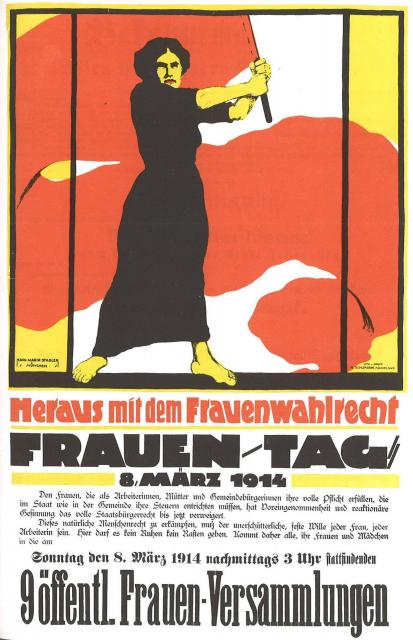
Without women in labor, we would not have Women’s History Month or International Women’s Day
The month of March is Women’s History Month. The month-long observance traces its beginnings back to Northern California, the jurisdiction of SEIU Local 1021, and to the first International Women’s Day, held on March 8, 1911. Women’s History Month and International Women’s Day highlight women’s social, economic, cultural, and political achievements to events in history and contemporary society.
“It is often said that, ‘as California goes, so goes the country,’” says Cynthia Landry, chair of the SEIU 1021 Women’s Solidarity Committee. “Highlighting women’s history is a vital example of that maxim. More in particular, it is extra satisfying to know that the origins of Women’s History Month are rooted in Northern California, where SEIU 1021 exists and International Women’s Day would not have existed without a militant labor movement.”
While largely forgotten in the United States until the late 1960s, Women’s History Month roared back to life when Laura X, a women’s rights activist, organized a march in Berkeley, California, on International Women’s Day, on March 8, 1969. Not only was International Women’s Day brought back into the spotlight, but so was Women’s History Month. Laura X thought it unfair for half the human race to have only one day a year and called for Women’s History Month to be built around International Women’s Day.
In 1978, the Sonoma Valley Unified School District participated in Women’s History Week, an event designed around International Women’s Day. In 1979, a fifteen-day conference about women’s history was held at Sarah Lawrence College from July 13 until July 29, chaired by historian Gerda Lerner. It was co-sponsored by Sarah Lawrence College, the Women’s Action Alliance, and the Smithsonian Institution. When its participants learned about the success of Sonoma Valley Unified School District’s Women’s History Week celebration, they decided to initiate similar celebrations within their organizations, communities, and school districts.
Originally held on February 28, 1909, International Women’s Day was first observed in New York City, organized by the Woman’s National Committee of the Socialist Party of America, led by Theresa Malkiel, a labor activist, suffragist, and educator. Malkiel founded and was the first president of the Infant Cloakmaker’s Union of New York, a forerunner of the modern-day UNITE HERE. Only four years would the day be cemented to March 8, with Russia being the first country to celebrate the day on March 8.
“We cannot talk about International Women’s Day without the steadfast determination of women labor activists,” Landry continued. “What we have to understand is that then, as we see now, women’s rights were under attack. Women then recognized that by only coming together across race, ethnicity, religion, or cultural background, we could fight the systemic injustices that have been thrown at us for thousands and thousands of years. It was women who organized their workplaces, homes, and communities, which advanced gender quality in a way unlike anything before. Having organized ourselves into labor unions that predominantly focused on sectors of the economy that only women were accustomed to working, such as the clothing industry, we could build a mass movement that could tell the world: ‘take us seriously as workers, as human beings.’”
In 1917, in Petrograd, Russian Republic (now modern-day Saint Petersburg, Russian Federation), women textile workers began a demonstration on March 8 that eventually consumed the entire city, demanding “Bread and Peace”—an end to World War I, food shortages, and czarism. That marked the beginning of the February Bourgeois Democratic Revolution, which alongside the Great October Socialist Revolution, made up the 1917 Russian Revolution.
“The fight for gender equality along social, economic, cultural, and political lines is far from over,”Landry pointed out. “We fought for and won the right to vote, run for public office, have bodily autonomy and integrity, and live our own independent lives. The fight to pass California Proposition 1, the Constitutional Right to Reproductive Freedom, last year is just one recent example. While those rights and more are threatened by far-right conservative, reactionary rollbacks and attacks, our ancestors from over a century ago showed us that when we come together, there is nothing we cannot accomplish.”

